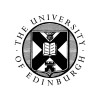
A Proof of Concept Study to Evaluate the Safety of Afamelanotide in Patients With Acute Arterial...
Arterial Ischemic StrokeThe primary study objective is to assess the safety of afamelanotide while the secondary objective is to assess whether the therapy affects the size of the penumbra, by increasing blood flow, restoring oxygen supply to the brain, and reducing the amount of cerebral oedema (fluid) which is seen as a result of the stroke. Positive findings would indicate that the drug is able to support brain tissue-at-risk and provide overall neuroprotection and benefit to stroke patients.

PMZ-1620 (Sovateltide) in Acute Ischemic Stroke Patients
Acute StrokeCerebral IschemiaThis was a prospective, multicentric, randomized, double blind, parallel, saline controlled Phase II clinical study to compare the safety and efficacy of PMZ-1620 (INN: Sovateltide) therapy along with standard supportive care in patients of acute ischemic stroke.

A Research of Application of the New Model of Standardized Secondary Prevention of Stroke
Acute Ischemic StrokeTo promote the application of the standardized secondary prevention of stroke in primary hospitals,and further reduce the recurrence rate, disability rate, and socioeconomic burden in China, the investigators aim to popularize the standard secondary stroke prevention strategy through artificial intelligence technology, and thus to establish an information management system for standard treatment of stroke.

Suhexiang Pill for Acute Ischemic Stroke: A Registry Study
Ischemic StrokeThe primary purpose of this study is to investigate the effectiveness and safety of the Suhexiang Pill for patients with acute ischemic stroke in real-world settings.

Effects of Mirror Therapy Versus Fine Motor Activities on Hand Function in Chronic Stroke Patients....
StrokeIschemic3 moreto compare the effects of the Mirror therapy and fine motor activities on hand function in chronic stroke patients

CT Clock Tool Feasibility Study
Ischemic StrokeAcuteInterruption of blood supply to the brain from a blocked blood vessel causes ischaemic stroke. This leads to symptoms relating to the areas of brain affected. For example, people with stroke may suddenly have trouble moving their arms, legs or face, and may find it hard to speak or lose consciousness. There are treatments available to open up the blocked blood vessel: Thrombolysis involves injecting a medicine to break down the blood clot causing the blockage. Thrombectomy means pulling the blood clot out through a tiny tube placed within the blood vessel. Both treatments can help restore blood supply to the brain and reverse the symptoms caused by stroke. These treatments are usually only offered when there is a clear onset time for stroke symptoms. However, for around 20% of strokes, the time of onset is unknown. Patients may wake up with symptoms, be confused or be found collapsed. So that treatment can be available to more people, the investigators have developed a method to estimate when an ischaemic stroke began, the CT Clock Tool. This method involves taking measurements from the brain imaging that most patients with stroke routinely get on arrival at hospital (CT or CAT scanning). In other words, no extra tests are needed to use the method; the investigators seek to make better use of existing tests. In this study, the aim is to understand whether it is feasible to use the CT Clock Tool method in the real world. For example, can doctors correctly use the tool during their normal work to produce accurate estimates for the onset time of stroke? The results of this study will be used to plan a future clinical trial for testing the safety of the CT Clock Tool when it is used to treat patients.

Aromatherapy and Foot Massage on Happiness, Sleep Quality, and Fatigue Levels of Patients With Stroke...
StrokeIschemicBackground: Stroke puts important economic and social loads on the society and was reported to be the most important reason for disability throughout the world. Purpose: The present study aims to experimentally examine the effect of aromatherapy and foot massage on happiness, sleep quality, and fatigue levels of patients with stroke. Material and method: The present study is a randomized clinical study with a control group. Participants were randomly divided into three groups (foot massage + aromatherapy, aromatherapy, and control). The study was carried out with 91 patients diagnosed with stroke. The data were collected using Sociodemographic Status Survey, Oxford Happiness Questionnaire, Piper Fatigue Scale, Pittsburgh Sleep Quality Index (PSQI). Statistical analyses were performed using SPSS (IBM SPSS Statistics 24) package program. The results were interpreted using frequency tables and descriptive statistics. Foot massage group was given 30min foot massage sessions (3 days per week) for 4 weeks, whereas foot massage + aromatherapy group was given lavender oil inhaler during the foot massage.

Single Arm Trial to Evaluate the Safety and Effectiveness of the Route 92 Medical Reperfusion System...
Acute Ischemic StrokeThe objective of the study is to evaluate the safety and effectiveness of the Route 92 Medical Reperfusion System when used to aspirate emboli in acute ischemic stroke patients.

Effects of PNF Patterns Training on Trunk Balance, and Gait in Chronic Stroke Patients
StrokeIschemicTo determine the effects of PNF patterns Training on trunk balance and gait in chronic stroke patients.

TPA in Acute Stroke With COVID Verus Non-COVID-19 Patients
Acute Ischemic StrokeThe investigator will recruit consecutively all patients coming with acute ischemic stroke either with or without COVID -19 infection and suitable for IV injection with Tissue plasminogen activators according to guideline and inclusion criteria of tPA. Aswan University Hospital.
